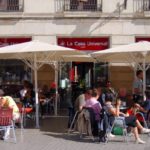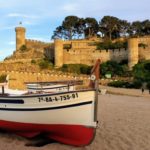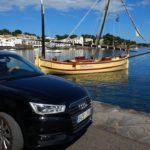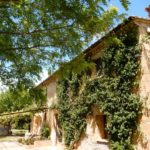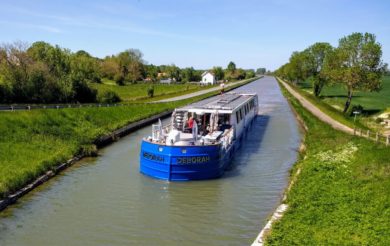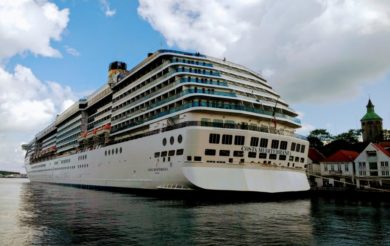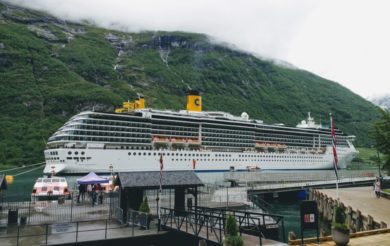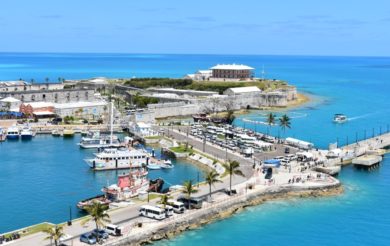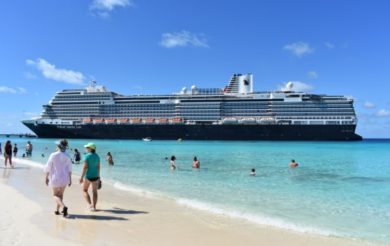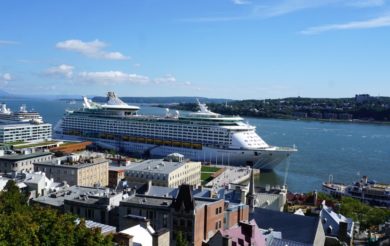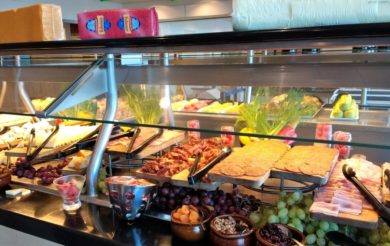Travel Spain: The Best Modernista Buildings in Barcelona
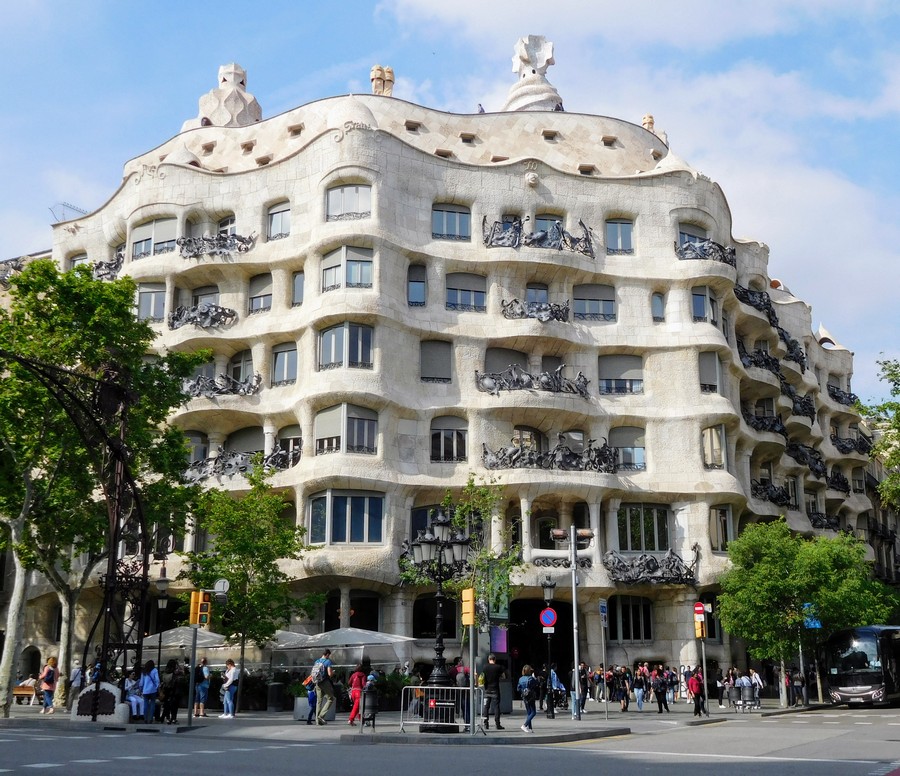
Travel Spain: The Best Modernista Buildings in Barcelona – Casa Mila – La Pedrera
Travel Spain: The Best Modernista Buildings in Barcelona
by Elizabeth von Pier
Modernisme is an offshoot of the Art Nouveau and Art Deco movements of the late 19th and early 20th centuries. Names like Antoni Gaudi, Lluis Domenech i Montaner, and Josep Puig i Cadafalch dominate the field and, throughout the Catalan capital and beyond, you will find breathtaking and must-see examples of their work. The best are described here.
Some of the characteristics found in modernista buildings include natural forms made from stone and marble; ceramics; stained glass; mosaics; forged iron; marquetry; and carved arches, doorways, and paneling made from fine woods. Nature with all its irregularities is generally featured prominently. You will see buildings that look like mammoth boulders and Nordic castles; a building with what could be mistaken for a giant bird’s nest on its roof; a church that is built inside-out; a hospital that treated Gaudi when he was struck and killed by a tram; and a park right out of a fairy tale.
THE TOP THREE ARCHITECTS
Everyone recognizes the name of the famous Catalonian architect, Antoni Gaudi (1852-1926), who brought a unique approach to modernisme through his playful, distinctive, and sometimes outrageous style. His work is more like art than architecture, and some of it has been controversial. But, love it or hate it, you cannot experience Gaudi’s work with indifference.
The natural world is featured throughout Gaudi’s work—in undulating rooftops and facades and in crooked windows and doors, balconies that look like the “masked” faces of raccoons, broken ceramics that are the colors of natural coral, and giant marble trees that provide for a breathtaking walk in the “woods”.
Gaudi specialized in trencadis, the use of small pieces of broken tile and ceramics, often disused objects taken from demolition sites, that are applied to surfaces like mosaics. He also was a master of light and shadow.
Lluis Domenech i Montaner (1850-1923) features the modernist style, maybe to an even clearer degree than Gaudi because his work is not as outlandish. Two of his projects have been recognized by UNESCO as World Heritage sites—the concert hall Palau de la Musica Catalana and the Hospital de Sant Pau.
Domenech studied architecture and physics and taught at Barcelona’s School of Architecture where his students included Gaudi and Puig. He also designed bookbindings and illustrated books, wrote and published articles, and was one of the founders of the main political force in Catalonia.
Josep Puig i Cadafalch (1867-1956) admired the designs of the country homes of the Catalan nobility and to these he added elements from medieval Northern European castles. He is best known for Casa Terrades, a “castle” in the Eixample district of Barcelona. Puig taught architecture and was an urban planner, an archaeologist, an art historian, and a political activist in the movement for Catalonian nationalism.
Among the most famous and most visited are the following modernista sights located in Barcelona. All provide breathtaking visual experiences and most have been designated as World Heritage by UNESCO.
BASILICA OF THE SAGRADA FAMILIA
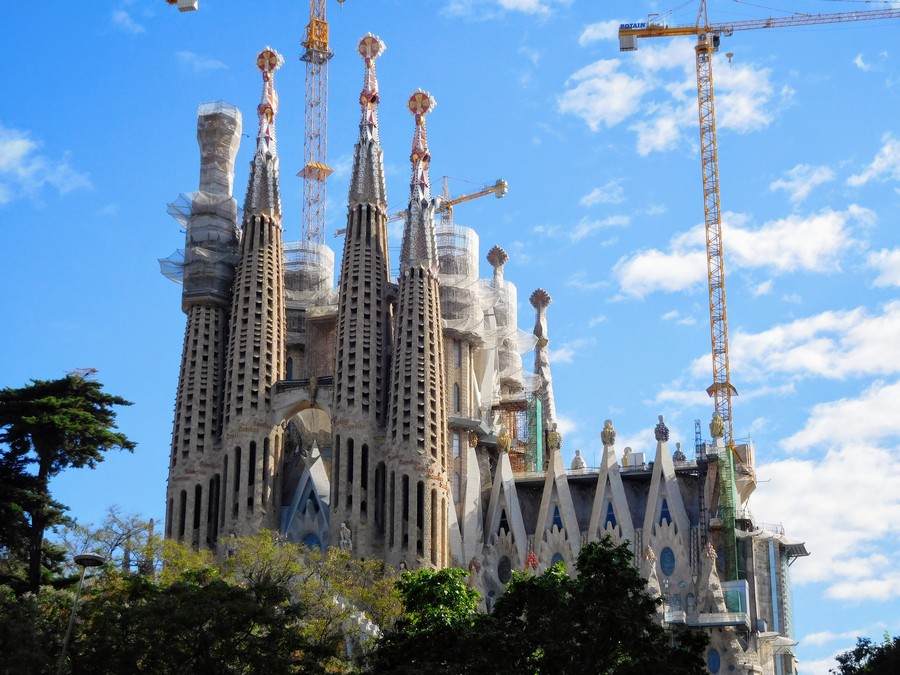
Basilica Sagrada Familia
– Main entrance is at the Nativity Facade on Carrer de la Marina, Barcelona
– Open 9am-6pm in winter and 9am-8pm in summer. Cost 15-29 €.
Designed by Antoni Gaudi, this large unfinished Roman Catholic church in the heart of Barcelona has been in the works for well over a century. It is expected to be completed by 2026, marking the centennial of Gaudi’s death. This is his best-known and most frequently visited masterpiece, a breathtaking “inside-out” structure that questions our common understanding of traditional church architecture.
Stories from the Bible told through statues, paintings, and carvings that you typically find on the inside of a traditional church are sculpted on the outside of this church. The eastern facade tells the story of the nativity. Every surface is covered with classical statues, vines, flowers, fruits, and animals. The western side is devoted to the passion—it is shockingly harsh, simple, and stark to depict the suffering and death of Jesus. And the third side is still unfinished. It is dedicated to the glory of God and will have gigantic trumpets and images of heaven, purgatory, and hell.
The interior of the basilica looks like a forest. “Trees” made from pillars of colored marble soar toward the rooftop. Rays from the sun shine through blue and green stained glass windows on the nativity side and bring to mind a summer woodland. In the west, the passion side, are the oranges, reds, and yellows of autumn and end of day.
CASA AMATLLER
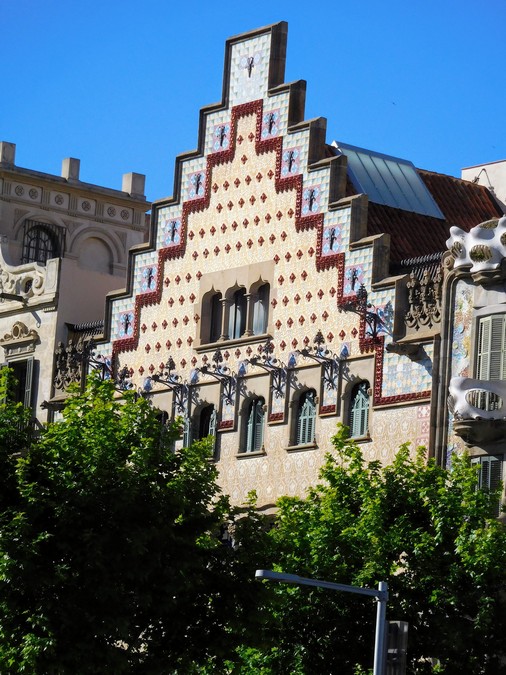
Casa Amatller
– 41 Passeig de Gracia, Barcelona
– Open daily 10am-6pm. Cost 24 €.
This Gothic palace next door to Casa Batllo was designed by Puig as an office and apartment building. Its stepped gable facade made of maroon, pink, and gray tiles is a striking example of Dutch architecture.
It was built between 1898 and 1900 for chocolatier Antoni Amatller. Most of the restoration of the interior has been completed and there is some original furniture on display. Take the guided tour and enjoy a sampling of hot chocolate at the end.
CASA BATLLO
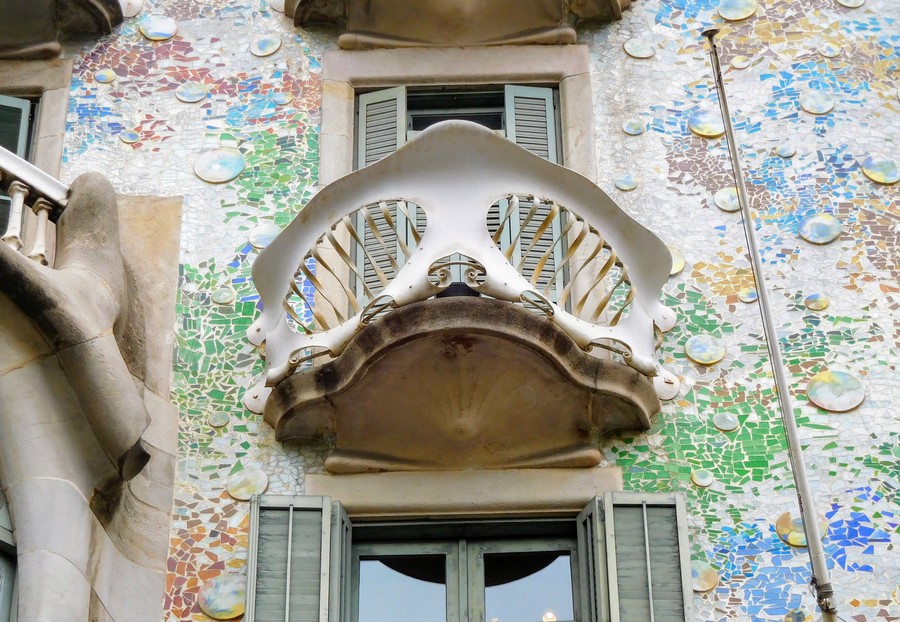
Casa Batllo
– 43 Passeig de Gracia, Barcelona
– Open 9am-9pm. Cost 24,5-39 €.
Designed by Gaudi, this deliciously creepy house was built between 1904 and 1906 for industrialist Joseph Batllo. It served as his family home and also provided income-producing rental apartments. As the structure was being built, its radical design broke all of the city’s bylaws and accommodations had to be made.
Like much of Gaudi’s work, Casa Batllo is an homage to nature. The shimmering colorful face has a striking blue slanted roof and a facade constructed from mosaics that use colors from marine life and coral. The unusual balconies resemble the masked faces of raccoons. And the windows on the main floor are supported by femur-like columns and topped with stained glass that is the color of the sea.
Joseph Batllo and his family lived on the two lowest floors. The rental apartments above face both the street and a stunning pale-blue tiled courtyard. Gaudi wanted to provide uniform lighting in all the units so he designed the windows on the upper floors which are closer to the sunlight to be smaller than those on the lower floors.
CASA LLEO MORERA
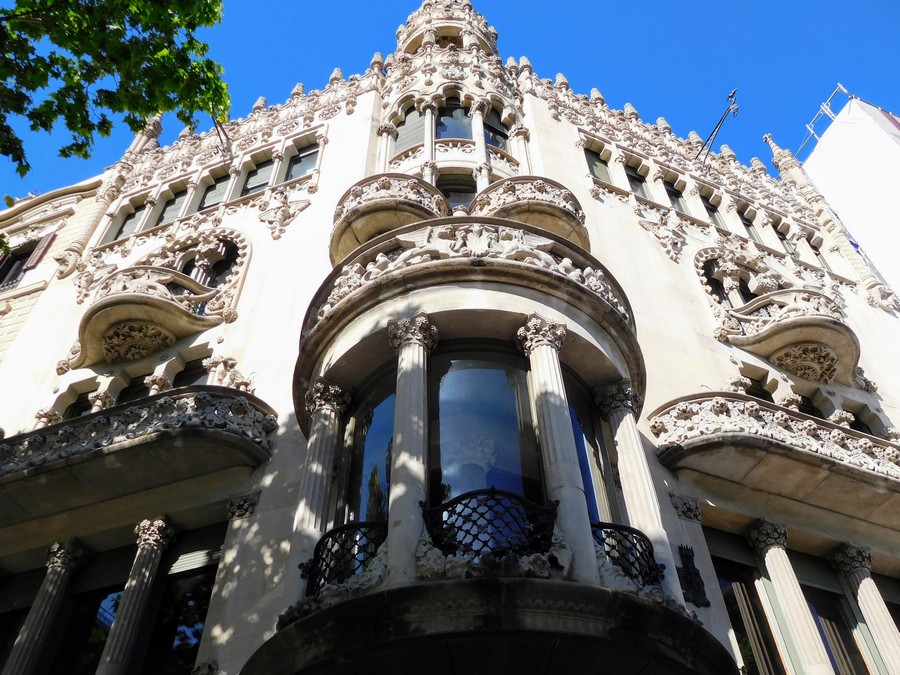
Casa Lleo Morera
– 35 Passeig de Gracia, Barcelona
– The only access to the building is through the space occupied by the retailer Loewe (open 10am-8:30pm Monday-Saturday)
This house commissioned in 1902 by the Morera family was a complete rebuild of a house originally built in 1864. The architect was Domenech and it is loaded with modernista details. The Morera family name means “mulberry” in English and mulberry trees, flowers, and leaves are prominently featured in the design.
The building is situated at the corner of two streets and is not symmetrical. Domenech compensated for this by building a miniature temple on the rooftop to draw the eye upward and placed grand windows on the lower floors. He also designed five gallery windows on the shorter side of the building, and seven on the longer side. The overall impression is one of balance and symmetry.
Loewe, the retailer of luxury leather goods, is located on the street level and is the only part of the building that is open to the public. It is worth a peek inside although not all of the original details have been preserved.
CASA MILA (“LA PEDRERA”)
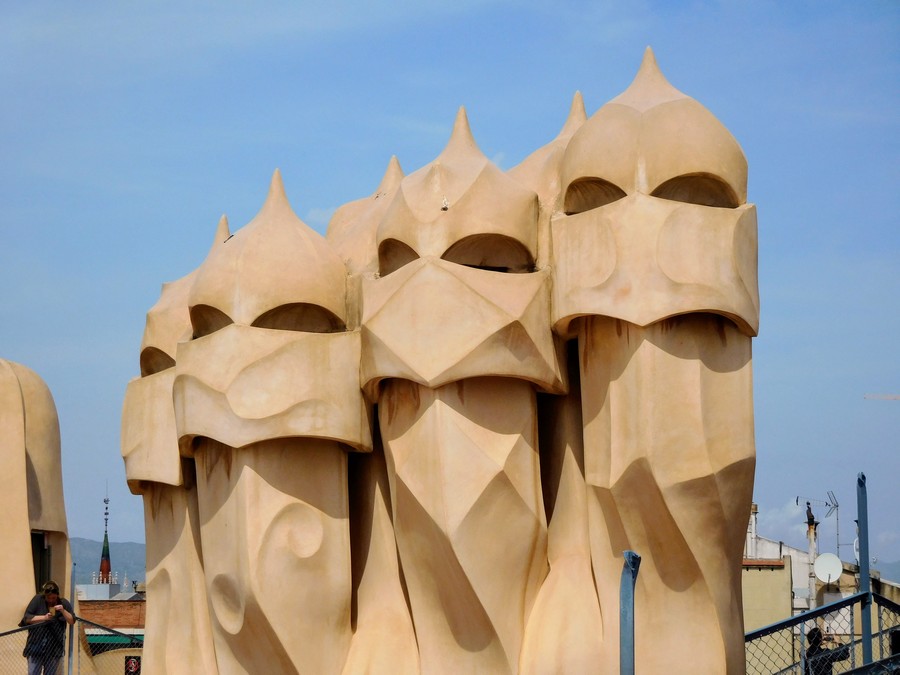
Casa Mila – La Pedrera Rooftop Guardsmen
– 92 Passeig de Gracia (at junction of Carrer Provenca), Barcelona
– Summer hours 9am-11pm. Cost 21-45 €.
Another Gaudi masterpiece, more commonly called “La Pedrera” from the Catalan word meaning “quarry”, Casa Mila is an eight-story residential apartment and office building that is made from undulating stones and looks like a large boulder. It was constructed in 1906-1912 for the wealthy Mila family.
The iconic feature of this house is the rooftop. Gaudi believed that the functionality found on rooftops does not have to be ugly, so he incorporated fanciful designs into the roof. The chimneys here look like giant hooded guardsmen with big eyes, and the ventilation function is housed in interesting stone and tiled mosaic structures. You can take the elevator up to the roof and climb up and down the “hills” amongst the guardsmen. There are great views of Passeig de Gracia and Barcelona’s rooftops from up here.
Rooms in La Pedrera are irregularly shaped which make them difficult to furnish; in fact, the Mila family had trouble renting out the apartments because of this. But Gaudi was true to his passion, saying, “there are no straight lines or sharp corners in nature. Therefore, buildings must have no straight lines or sharp corners.”
CASA TERRADES (“CASA DE LES PUNXES”)
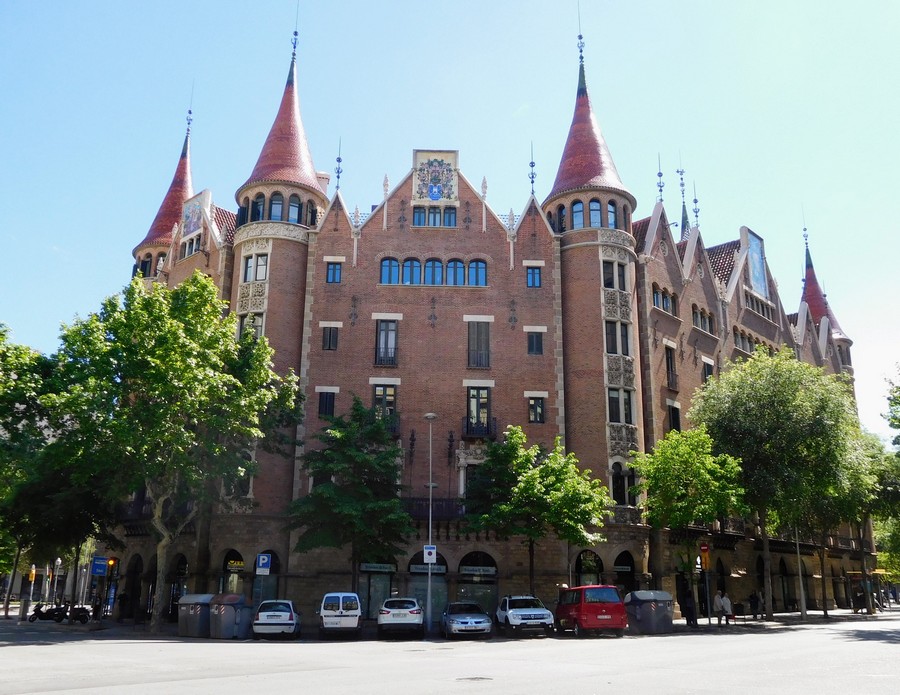
Casa Terrades – Casa de les Punxes
– Avenue Diagonal 416-420, Barcelona
– Open 9am-10pm daily. Cost 10-20 €.
This 1905 apartment house by Puig looks like a medieval castle right out of the mountains of Northern Europe. More commonly called Casa de les Punxes (“House of the Spikes”) for the spikes on the six towers, it was commissioned by the Terrades family to provide income for the three daughters.
It has a stunning brick facade, tiled turrets, gargoyles, and stone ornamentation around windows and doors. Four large panels surmount the facade; they are done in decorated ceramics and portray patriotic Catalan themes.
Go inside for the self-guided tour. This will get you up to the roof terrace where you can catch an up-close view of the Gothic towers.
FUNDACIO ANTONI TAPIES
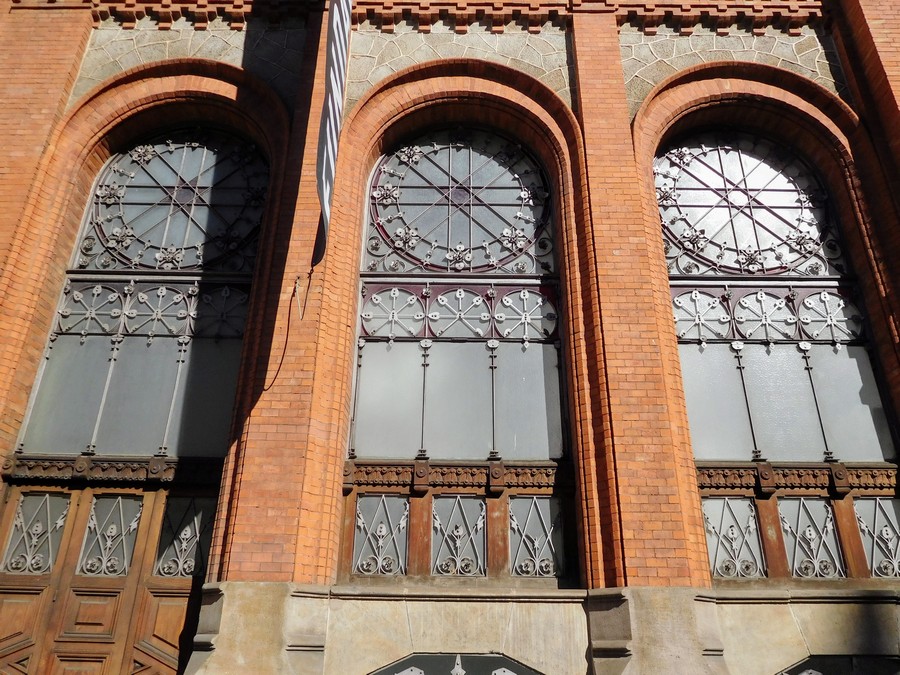
Fundacio Antoni Tapies
– Carrer d’Arago 255, Barcelona
– Open 10:00am-7pm daily except Monday. Cost 7 €.
This was Domenech’s first modernista work. It is a small museum and cultural center dedicated to the study and understanding of modern art. It was founded by the contemporary painter, Antoni Tapies (1923-2012).
Tapies’ work can be extreme and may not be for everyone, but he is world-renowned and has exhibited in some of the top art museums in the world. Discordant music plays in the background as you view the exhibits. The swirling wire sculpture on the roof that looks like a bird’s nest is also by Tapies.
HOSPITAL DE LA SANTA CRUEI I SANT PAUL (HOSPITAL OF THE HOLY CROSS AND SAINT PAUL)
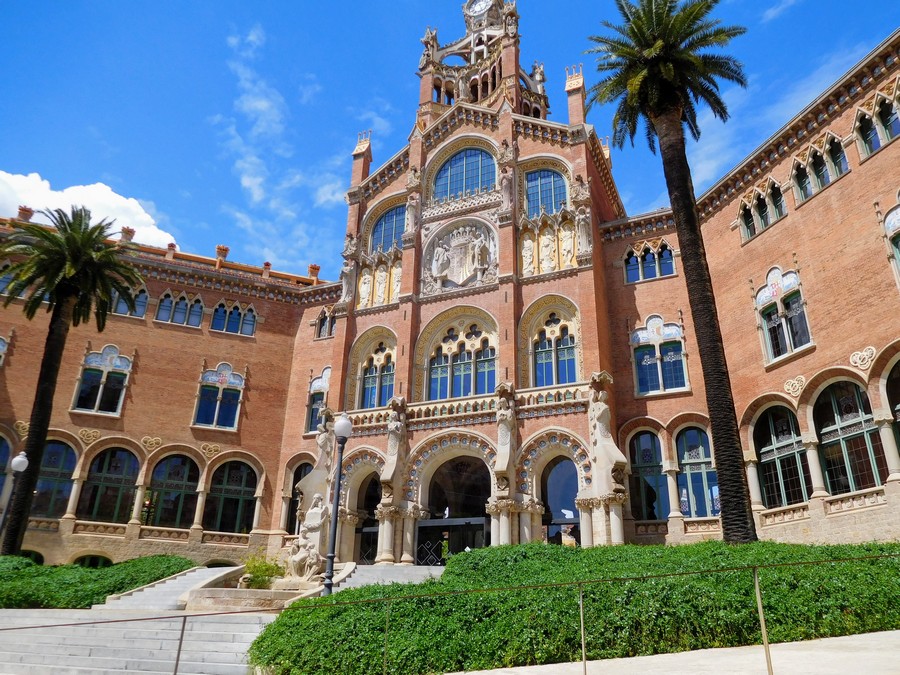
Hospital de Sant Pau
– 167 Sant Antoni Maria Claret Street, Barcelona
– Open 9:30am, check website for closing hour. Cost 14-19 €.
This former hospital in a busy Barcelona neighborhood may not be on everyone’s “must-see” list, but it should be. It is a magnificent complex designed by Domenech who believed that sick patients would recover faster if they were in beautiful surroundings. He designed a stunning complex of brick buildings that look blue and red in the sunlight and are adorned with elements typical of modernisme.
At the center is an administration building with a clock tower. Behind the main building are forty-eight pavilions set in lush gardens on 360 acres. They were once devoted to various medical specialties and connected by underground passageways. Today, they are in the process of being restored and some of them are on the tour.
Construction was financed by a wealthy banker who wanted the hospital to have the best of medical technology that was available at the time. It took nearly thirty years to build, from 1901 to 1930. When Gaudi was hit by a tram in 1926, he was taken here for treatment before he finally succumbed to his wounds two days later.
In 2009, Saint Paul’s was converted to a research and cultural center and is no longer used as a hospital. A new hospital was built next door.
PALAU DE LA MUSICA CATALANA
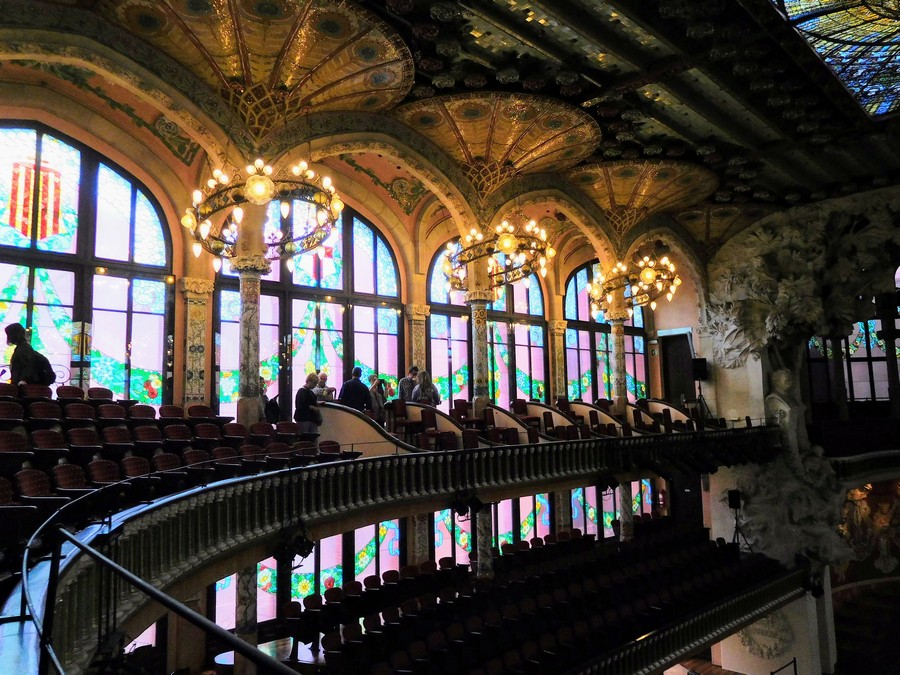
Palau de la Musica Catalana
– Carrer Palau de la Musica Catalana, off Via Laietana, Old City Barcelona
– Guided tours every 30 minutes from 10:00am-3:30pm. Cost 16-20 €.
This breathtaking piece of Catalan modernisme built by Domenech in 1905-1908 is the only concert hall in the world that has been designated a UNESCO World Heritage Site. It is both luxurious and fanciful, and there is so much detail that it is hard to take it all in. More than 2,000 roses are embedded in the architecture of the hall, and the stained glass skylight has been appropriately described as “a drop of water and honey, a source of both light and inspiration.”
Take the guided tour and you will be rewarded at the end with a piece of music on the grand pipe organ in the concert hall. Then stop by the enticing cafe for some pastry and tea.
PARK GUELL
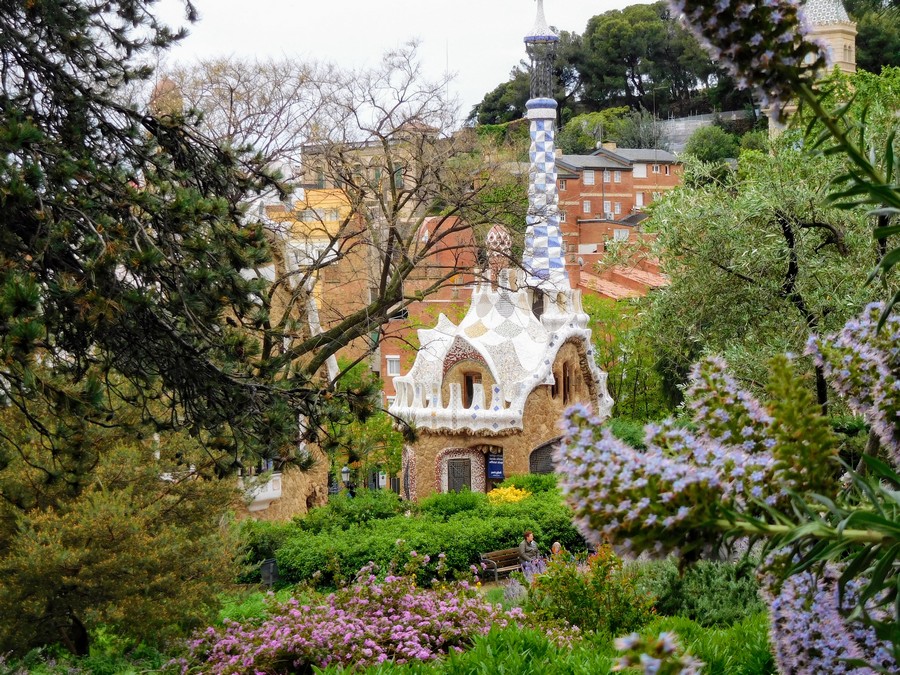
Park Guell
– Calle d’Olot, Barcelona. Take green line Metro to Lesseps and walk up from there.
– Summer hours 8am-9:30pm. Cost 7,50-8,50 €.
This magical place is a fantasy right out of a fairy tale. You will find two Hansel and Gretel cottages at the entrance, colorful serpentine benches on a terrace, and a giant lizard made from broken pieces of ceramic.
Not only did he love whimsy and nature, but Gaudi also was a deeply religious man. He built into his design a ceramic-clad steeple with a cross on top of one of the cottages.
Built between 1900 and 1914, the garden and park complex was ordered by Count Guell who wanted to build a small city-like project in the hills outside of Barcelona’s center. The project was never completed according to the original plan and some of the houses that were planned for the hillsides were never built.
It is located on the outskirts of the city and there is a convenient metro line that will get you there. Be prepared for a steep uphill hike.
IF YOU GO:
Two hotels are recommended: Majestic Hotel and Spa at 68 Passeig de Gracia, and Murmuri at 104 Rambla de Catalunya (a less expensive alternative). Both are well located within two or three blocks of Casa Mila and Casa Batllo, and walking distance of all other major sights.
Enjoy tapas at any of the sidewalk cafes along La Rambla de Catalunya and at tabernas throughout the city. One particularly appealing taberna/cafe is Txapela—it offers 51 different kinds of tapas and has numerous locations throughout the city.
BIO
Elizabeth von Pier is a retired banker and an avid traveler, photographer and writer. She has been published in the Los Angeles Times, GoNomad, Travel Thru History, and various online magazines. She recently published her first book, “Where to Find Peace and Quiet in London.” Ms. von Pier lives in Hingham, Massachusetts.


